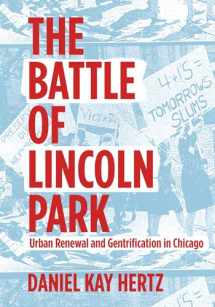
The Battle of Lincoln Park: Urban Renewal and Gentrification in Chicago
Book details
Summary
Description
In the years after World War II, a movement began to bring the middle class back from the Chicago suburbs to the Lincoln Park neighborhood on the city's North Side. In place of the old, poorly maintained apartments and dense streetscapes of taverns and butchers, “rehabbers” imagined a new kind of neighborhood―a renovated, modern community that held on to the convenience, diversity, and character of a historic urban quarter, but also enjoyed the prosperity and privileges of a new subdivision.
But as the old buildings came down, cheap studios were combined to create ever more spacious, luxurious homes. Property values rose swiftly, and the people who were evicted to make room for progress began to assert their own ideas about the future of Lincoln Park. Over the course of the 1960s, divisions within the community deepened. Letters and picket lines gave way to increasingly violent strikes and counterstrikes as each camp tried to settle the same existential questions that beguile so many cities today: Who is this neighborhood for? And who gets to decide?


We would LOVE it if you could help us and other readers by reviewing the book
Book review



